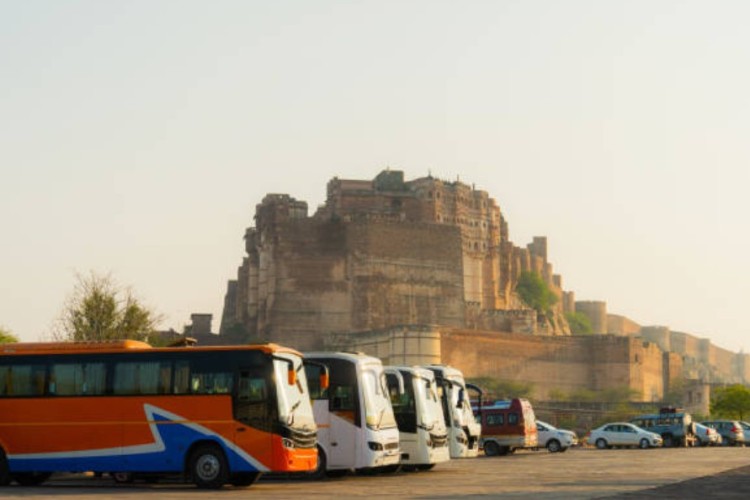
India’s urban transport agenda is skewed. Over the past decade, governments have showcased prestige projects — metros, expressways and even bullet trains — while neglecting the backbone of daily mobility: bus fleets. The result is visible on the ground. Bengaluru’s flyovers remain clogged, Chennai struggles with toxic air, and peak-hour gridlock now invites ad-hoc fixes rather than systemic change. The burden falls on those who do not drive or cannot afford cars — the majority of commuters who rely on buses.
India runs with just about 1.3 buses per 1,000 people, far below the 8–10 benchmark seen in better-served systems. That undersupply pushes commuters to motorcycles and cars, worsening both congestion and emissions. Doubling urban bus fleets is the lowest-cost, fastest-to-deploy and most equitable reform available.
READ | AI-generated drug reaches human trial milestone
Global evidence supports this proposition. Bogotá’s TransMilenio, a bus rapid transit (BRT) network, carries about 2.0 million weekday riders at a fraction of metro costs. London’s buses logged 1.869 billion journeys in 2023/24 — comfortably more than the Underground — after network improvements such as the Superloop added millions of bus-kilometres. Hong Kong’s franchised buses account for roughly a third of all daily public transport trips in an ultra-dense city where rail is strong, underlining how buses and metros work best as complements, not rivals.
Institutional and financial failures
The weakness of Indian bus systems is institutional as much as technical. State transport undertakings operate with chronic losses, political interference and rigid fare caps; fleets are old and maintenance poor. Haryana Roadways, for example, combines high operating costs with extensive free or concessional travel and new entitlement schemes that add fiscal pressure; losses in recent years have run into hundreds of crores even as select depots report revenue gains. Predictably, private operators who could bring capital and discipline are deterred by shifting rules and weak contracting frameworks. The temptation, then, is to pursue ribbon-cutting projects rather than fix everyday services.
Urban transport is a climate and productivity issue. Buses are just 1% of India’s vehicle stock but account for roughly 15% of transport CO₂, which means cleaner, higher-capacity fleets offer unusually large mitigation per rupee spent. The Centre’s PM-eBus Sewa programme to deploy 10,000 e-buses across 100 cities is a start; a payment-security mechanism notified in October 2024 aims to reduce procurement risk and crowd-in private capital. Delhi illustrates the transition path: it is retiring ageing CNG vehicles while inducting e-buses at scale, though gaps in total fleet availability show why investment must be steady rather than episodic.
Bus fleets: Learning from systems that work
Cities that move people well put buses at the centre. London’s experience shows how network redesign and frequent, reliable surface routes sustain 1.9 billion annual trips and buffer rail shocks; recent Tube strikes again shifted demand onto buses and surface rail. Bogotá’s BRT demonstrates how dedicated lanes and off-board ticketing can deliver metro-like throughput. China pairs the world’s most extensive metro mileage with 700,000 public buses — over 90% of the world’s e-buses operate there — showing scale and electrification can go together. The lesson is not to fetishise any single mode, but to prioritise capacity where it is cheapest and quickest to add: on the road, with buses.
A credible mission would begin with dedicated, predictable financing, not one-off grants. A central urban bus fund — sourced from green levies, a reallocated fuel cess, and monetised carbon credits — should back multi-year gross-cost contracts that pay operators per kilometre for specified service levels. That shifts the risk away from cash fares and allows cities to buy reliability. City governments must be empowered to borrow against these streams and ring-fence repayments, so depot expansion, charging infrastructure and fleet renewal are not hostage to annual budget skirmishes.
Regulation should be arm’s-length and mode-neutral: a state or metropolitan transport regulator can set service obligations, fares and performance penalties across both public undertakings and private operators, and publish transparent scorecards. Finally, fleet modernisation must be planned — e-buses where duty cycles permit, efficient CNG or clean-diesel where they do not — so procurement and charging are sequenced, depots are upgraded, and maintenance is professionalised. The UK’s data on bus recoveries and TfL’s ridership accounting show why such governance and funding continuity matter more than sporadic capital splurges.
From local initiatives to national scale
Citizen campaigns point to a widening consensus. Recent “Double the Bus” actions in Mumbai, Pune and Nagpur pressed for budget reallocations towards bus fleets and operations rather than more flyovers. Vadodara’s shift from Smart-City support to municipal viability-gap funding, pending PM-eBus Sewa induction, is a reminder that cities must plan for operating subsidies as central schemes sunset. The central government can harness this momentum by co-financing time-bound service expansions, publishing comparable city dashboards, and rewarding measurable gains in ridership, speed and on-time performance.
Better buses cut congestion, improve air, and restore time to workers — at a fraction of the cost and gestation of rail. The numbers from London, Bogotá, Hong Kong and China show that bus-first networks are not a poor cousin to metros; they are the glue that makes urban transport work. If Indian cities want to be liveable, productive and climate-aligned, the governance agenda must change course — away from marquee projects and toward the mundane excellence of a bus that arrives on time, is clean, and gets you there faster.
